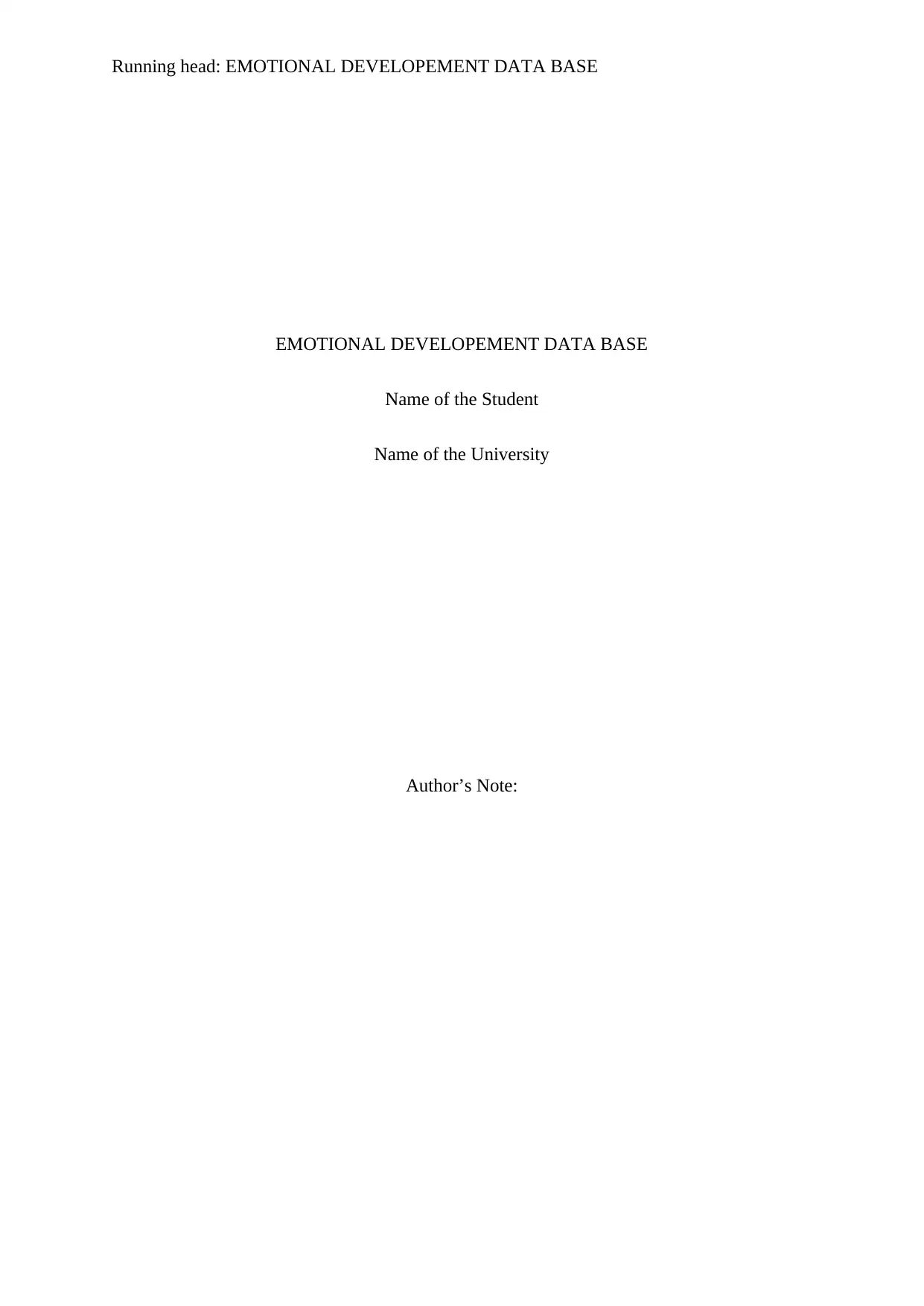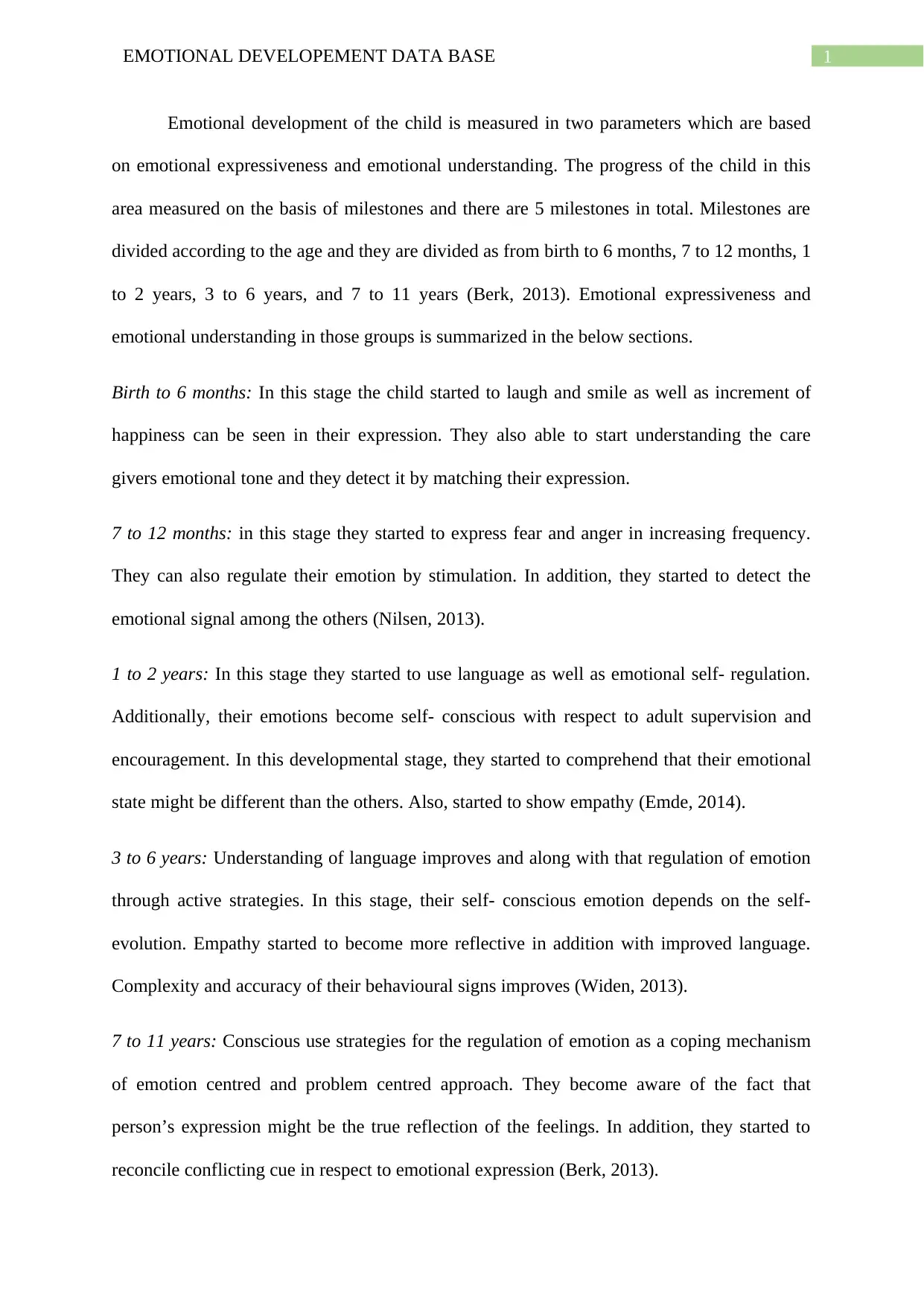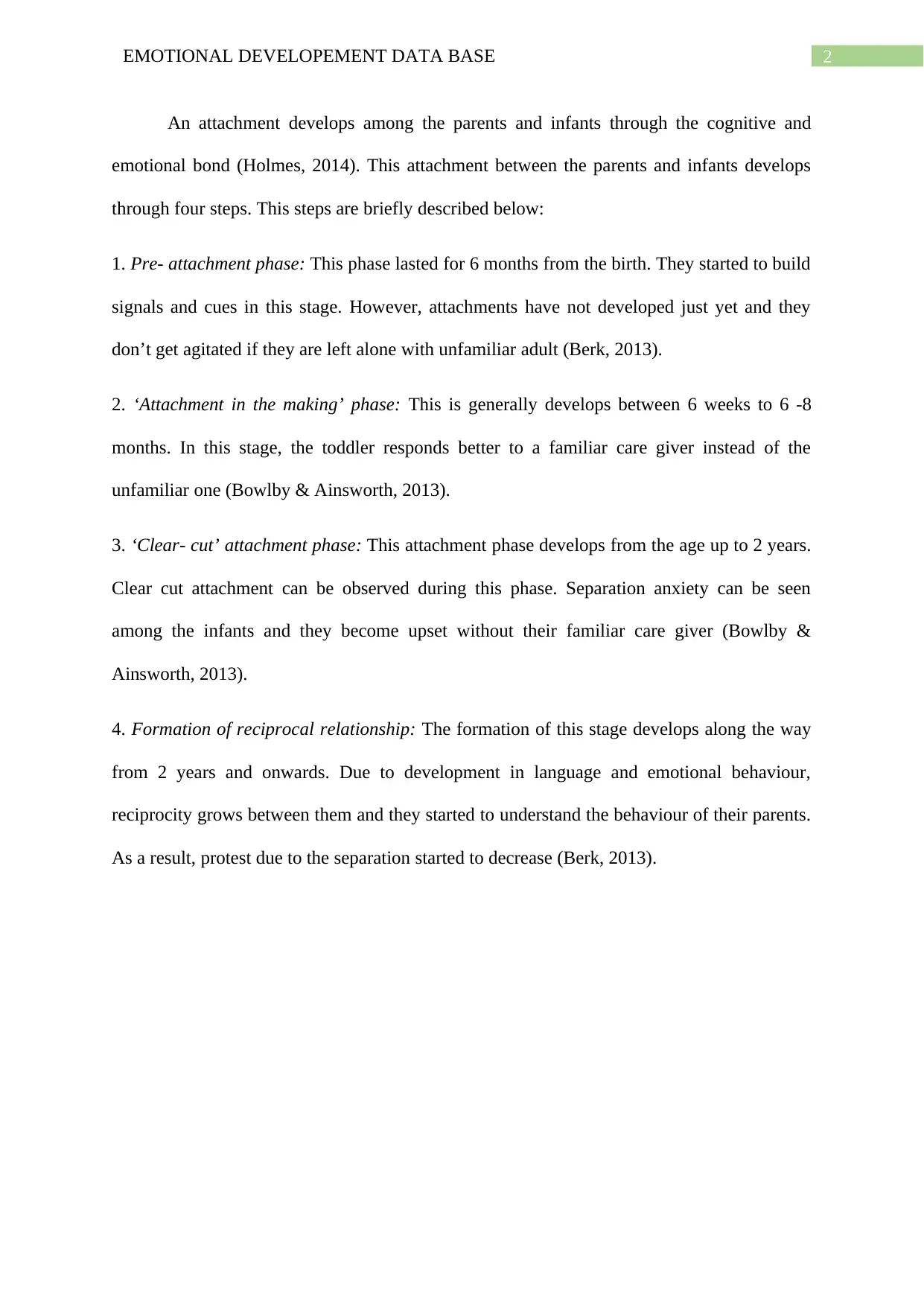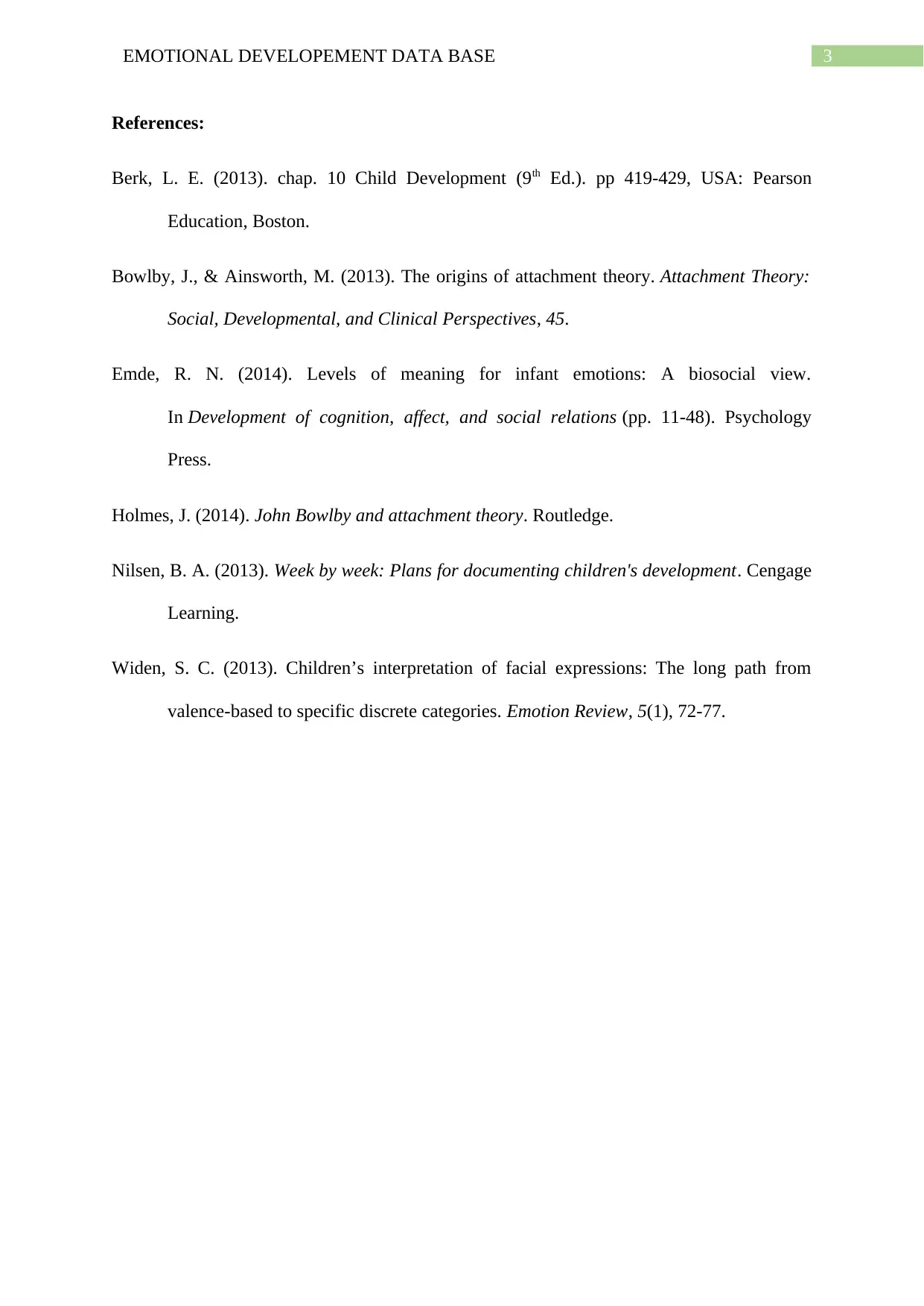Emotional Development Database Report: Child Development Analysis
VerifiedAdded on 2023/01/17
|4
|864
|95
Report
AI Summary
This report examines the emotional development of children, focusing on two key parameters: emotional expressiveness and emotional understanding. It details developmental milestones across five age groups: birth to 6 months, 7 to 12 months, 1 to 2 years, 3 to 6 years, and 7 to 11 years, outlining the progression of emotional behaviors such as smiling, fear, language use, self-regulation, and empathy. The report also explores the development of attachment between parents and infants, describing four distinct phases: pre-attachment, attachment in the making, clear-cut attachment, and the formation of a reciprocal relationship. These phases are characterized by specific behaviors and emotional responses, reflecting the evolving bond between caregivers and children. The report references key sources like Berk (2013), Bowlby & Ainsworth (2013), and others to support its findings.
1 out of 4











![[object Object]](/_next/static/media/star-bottom.7253800d.svg)